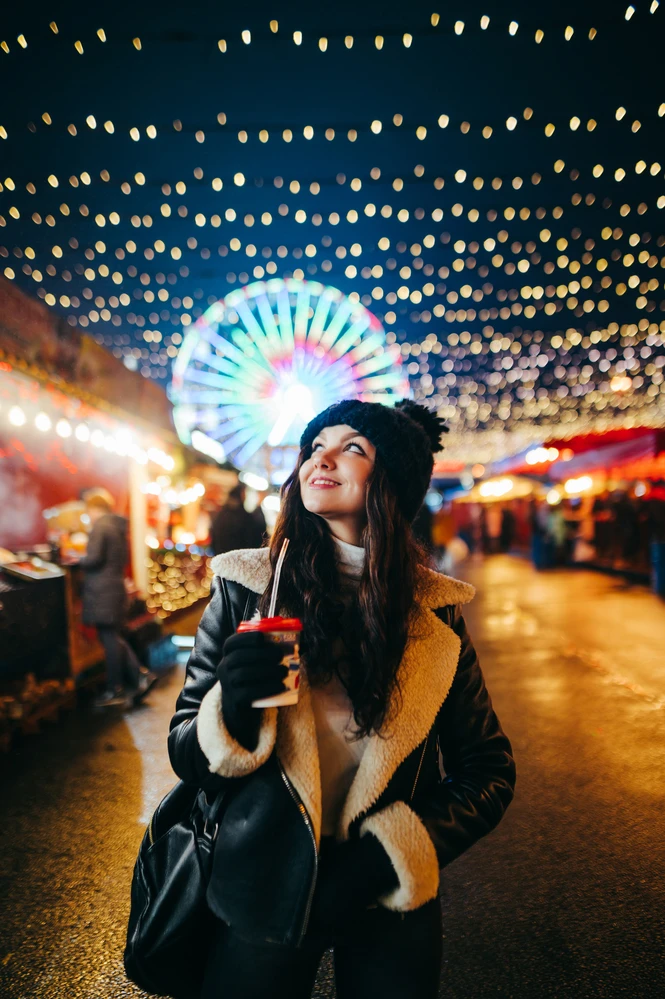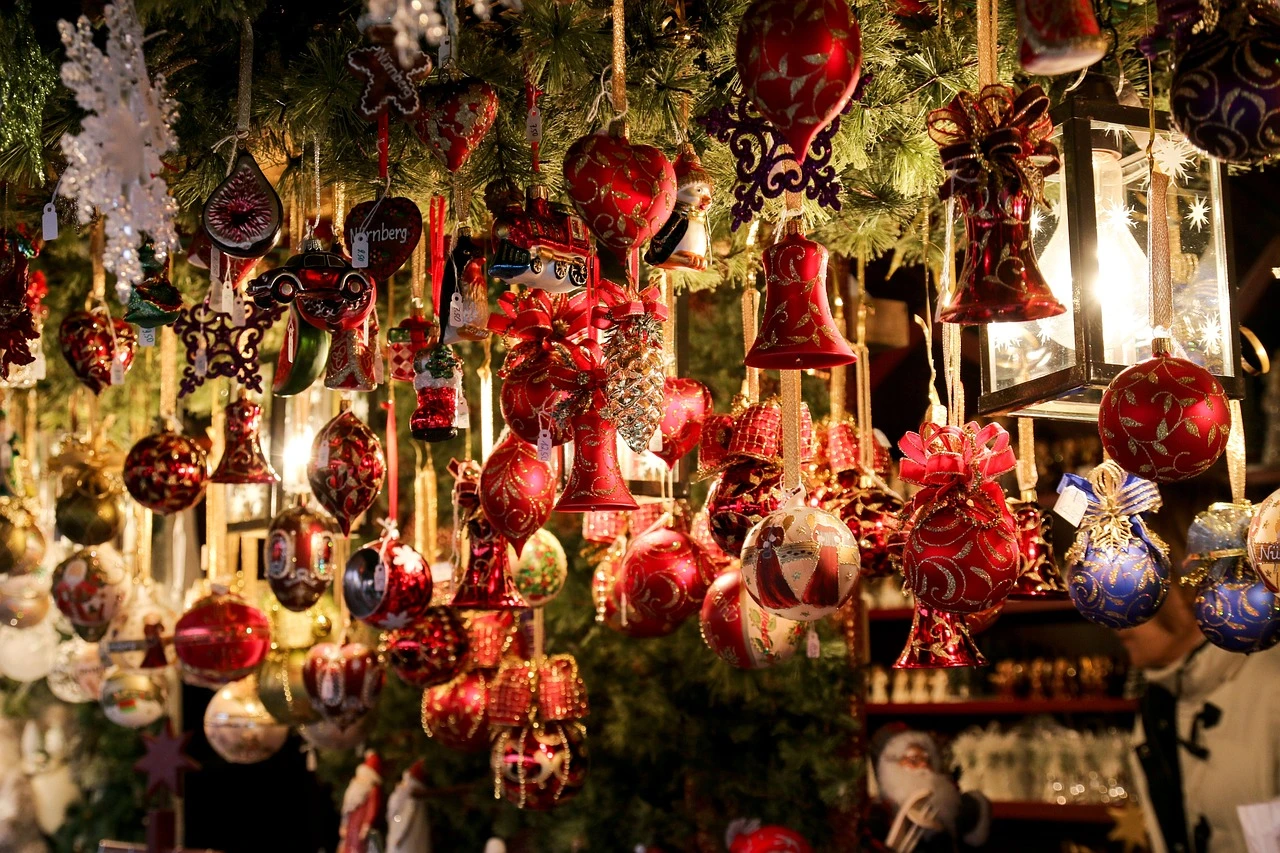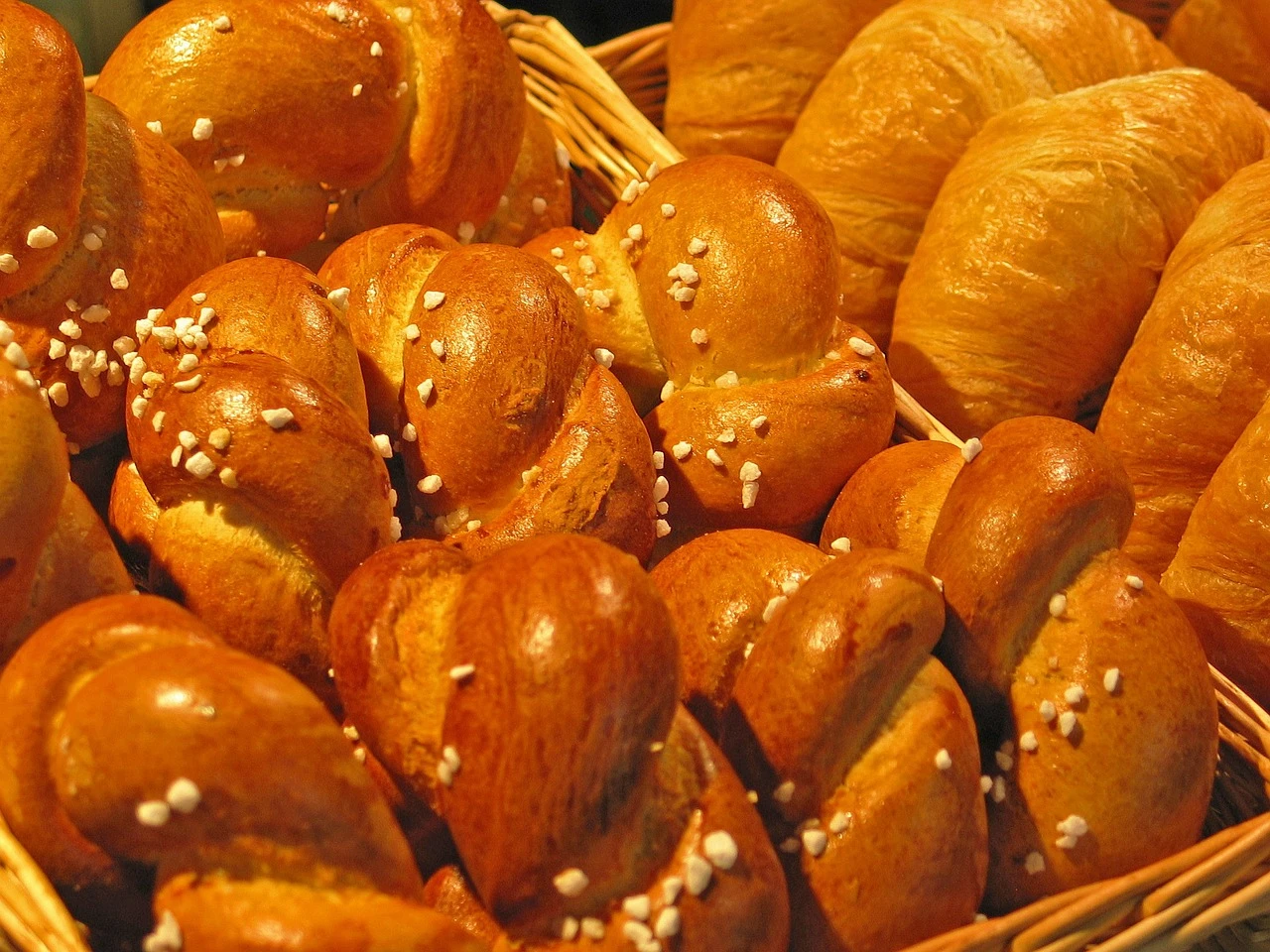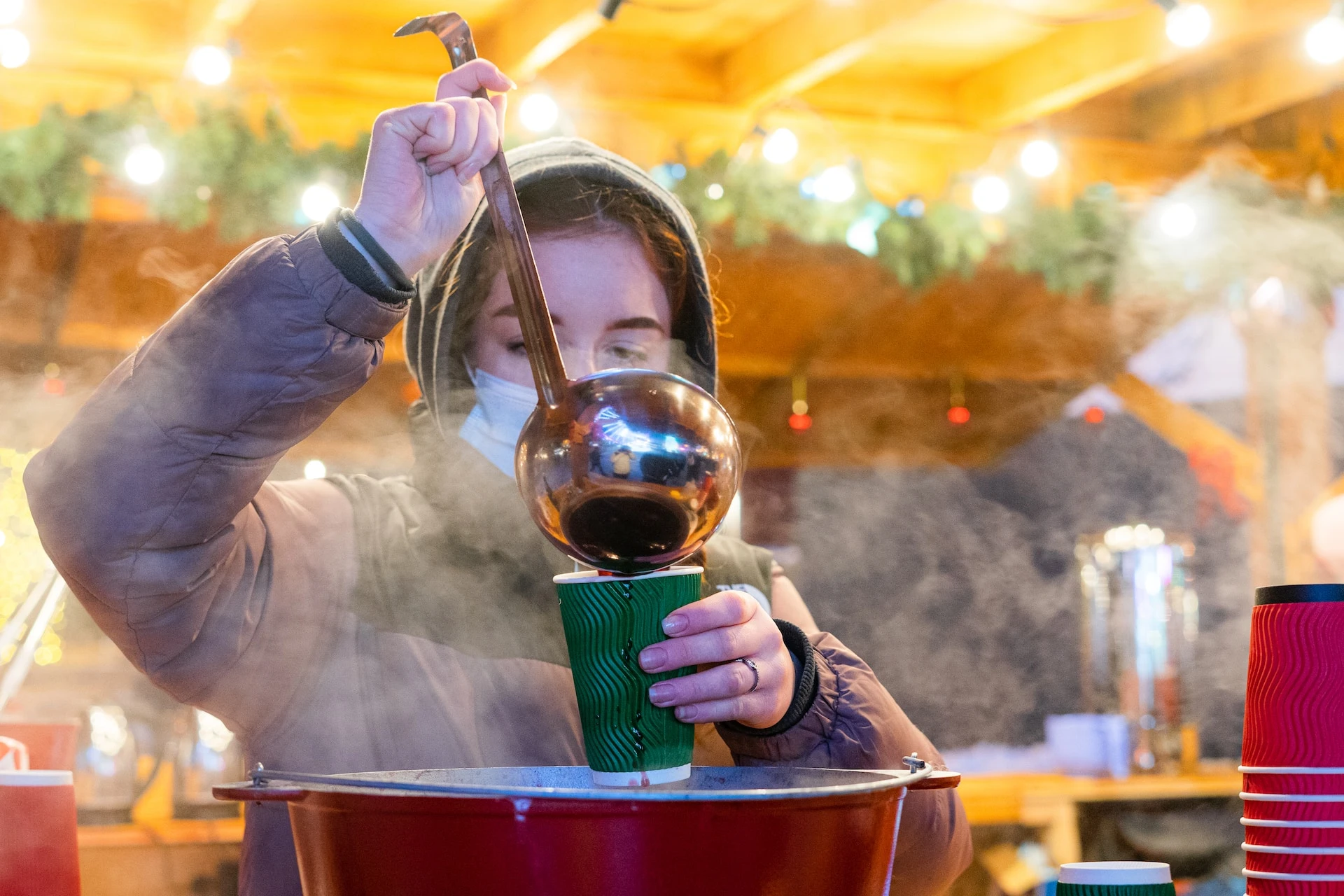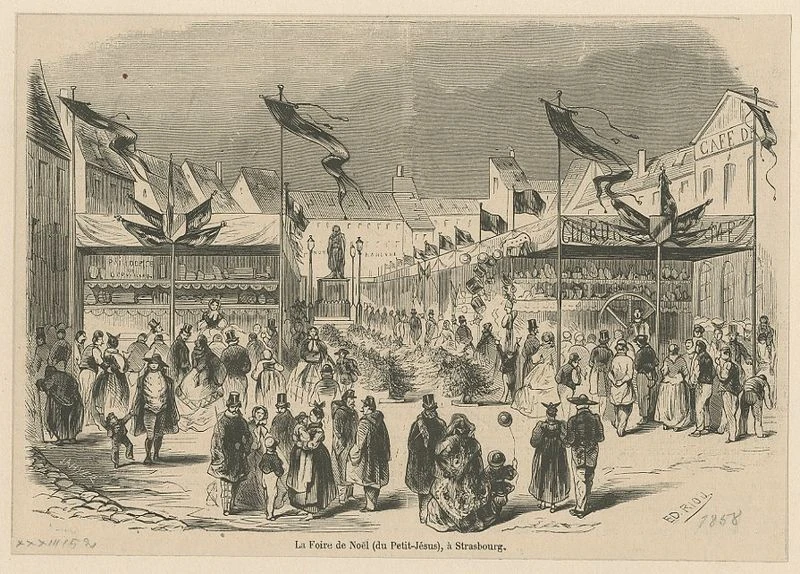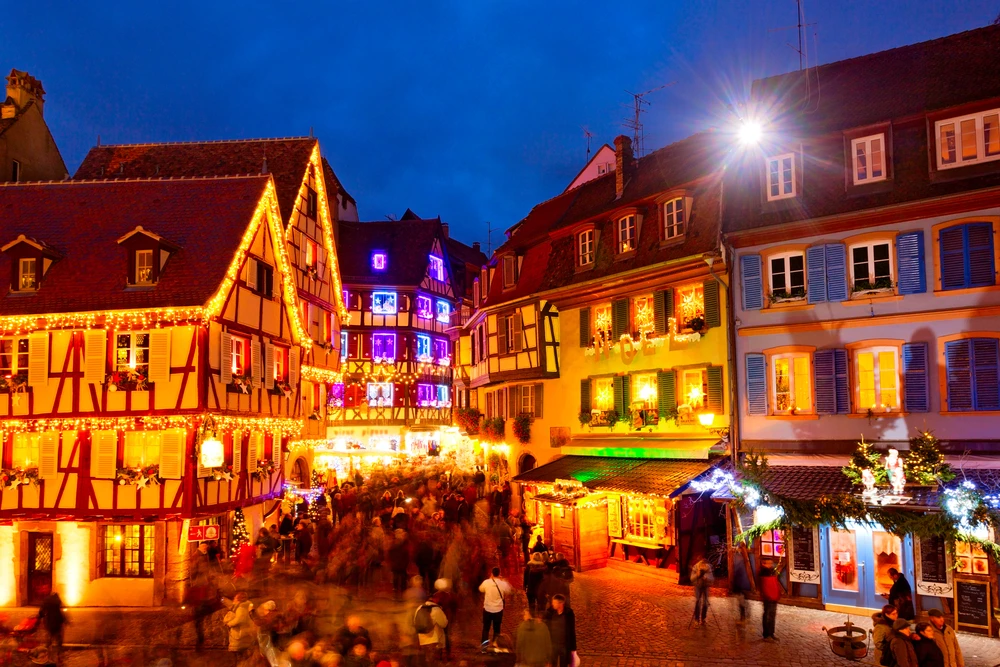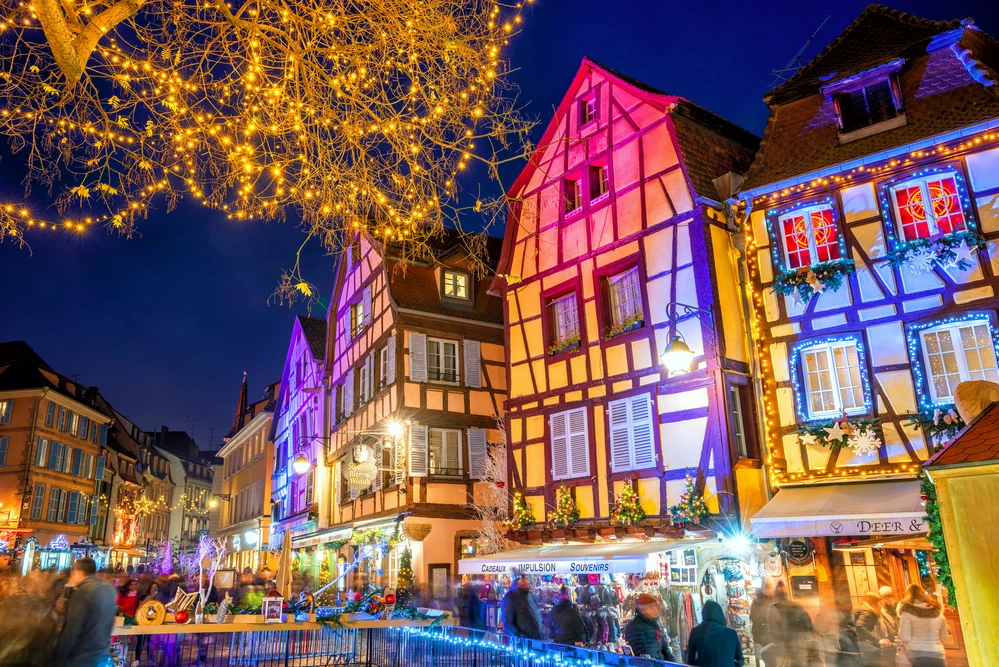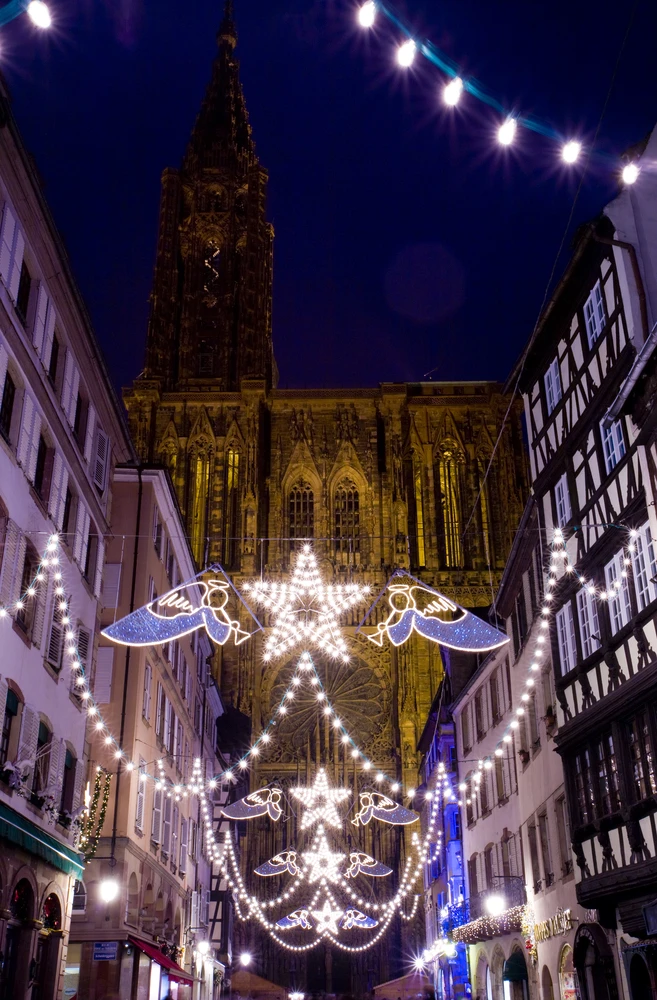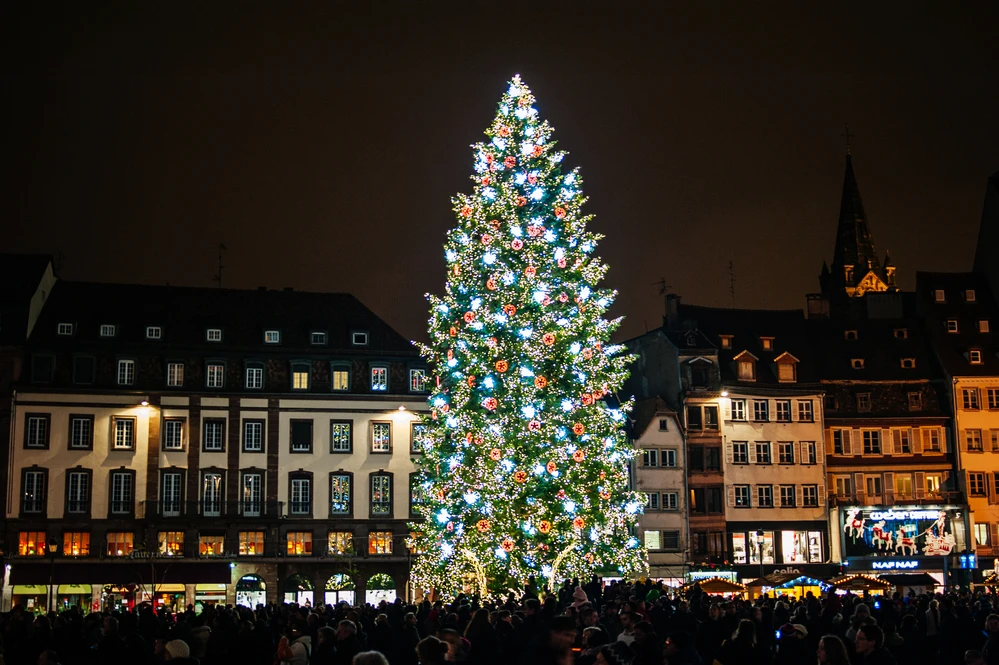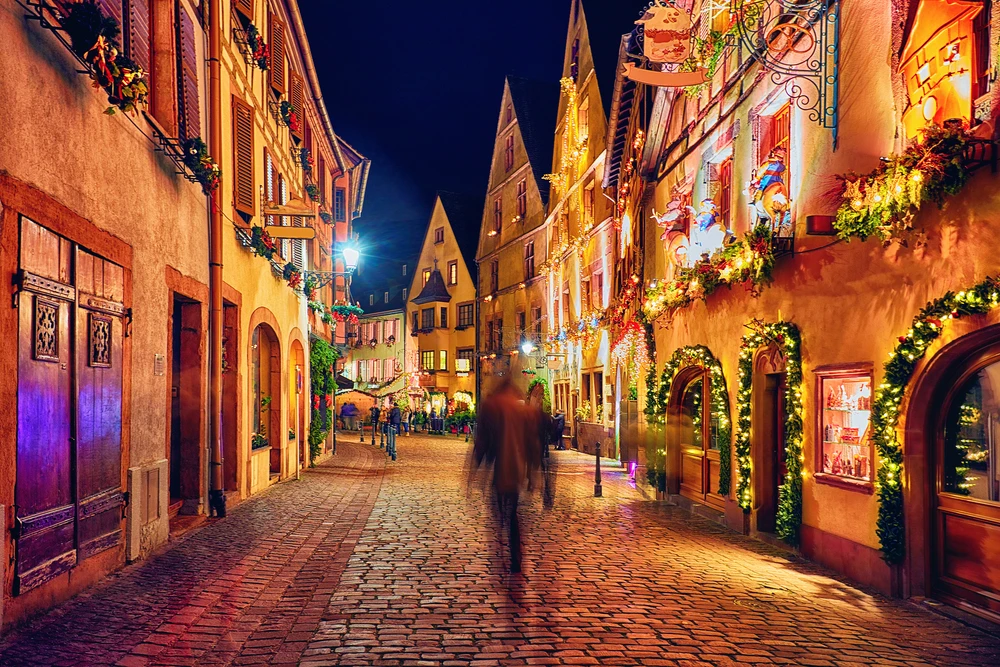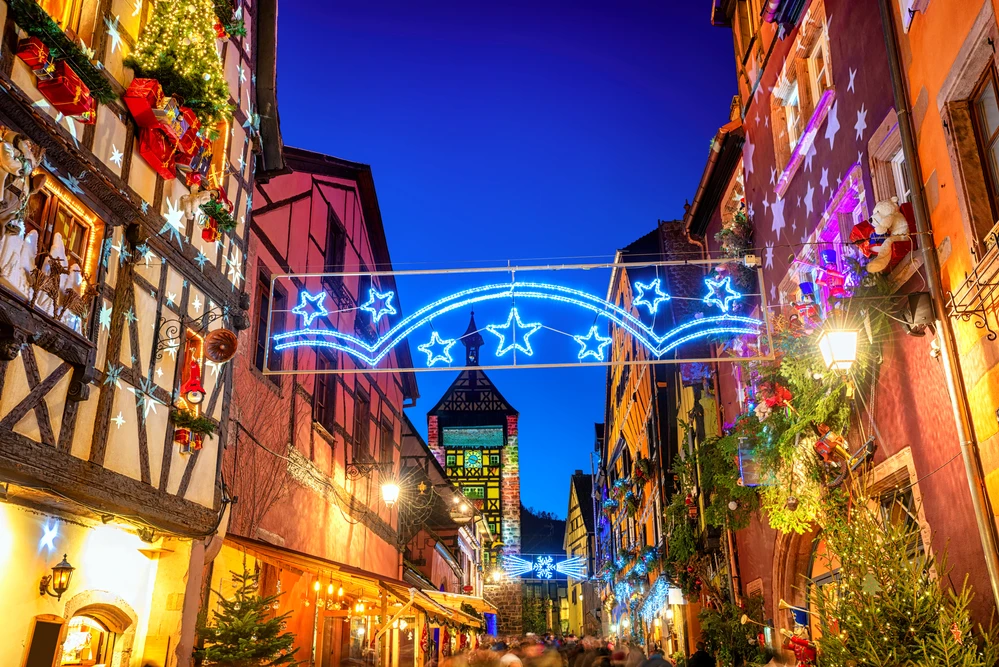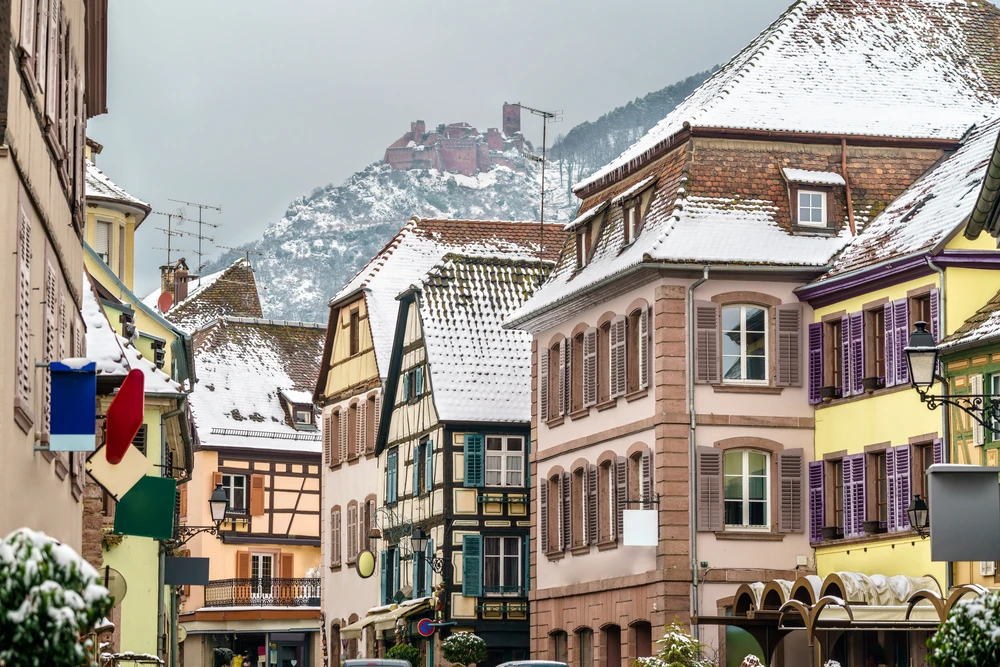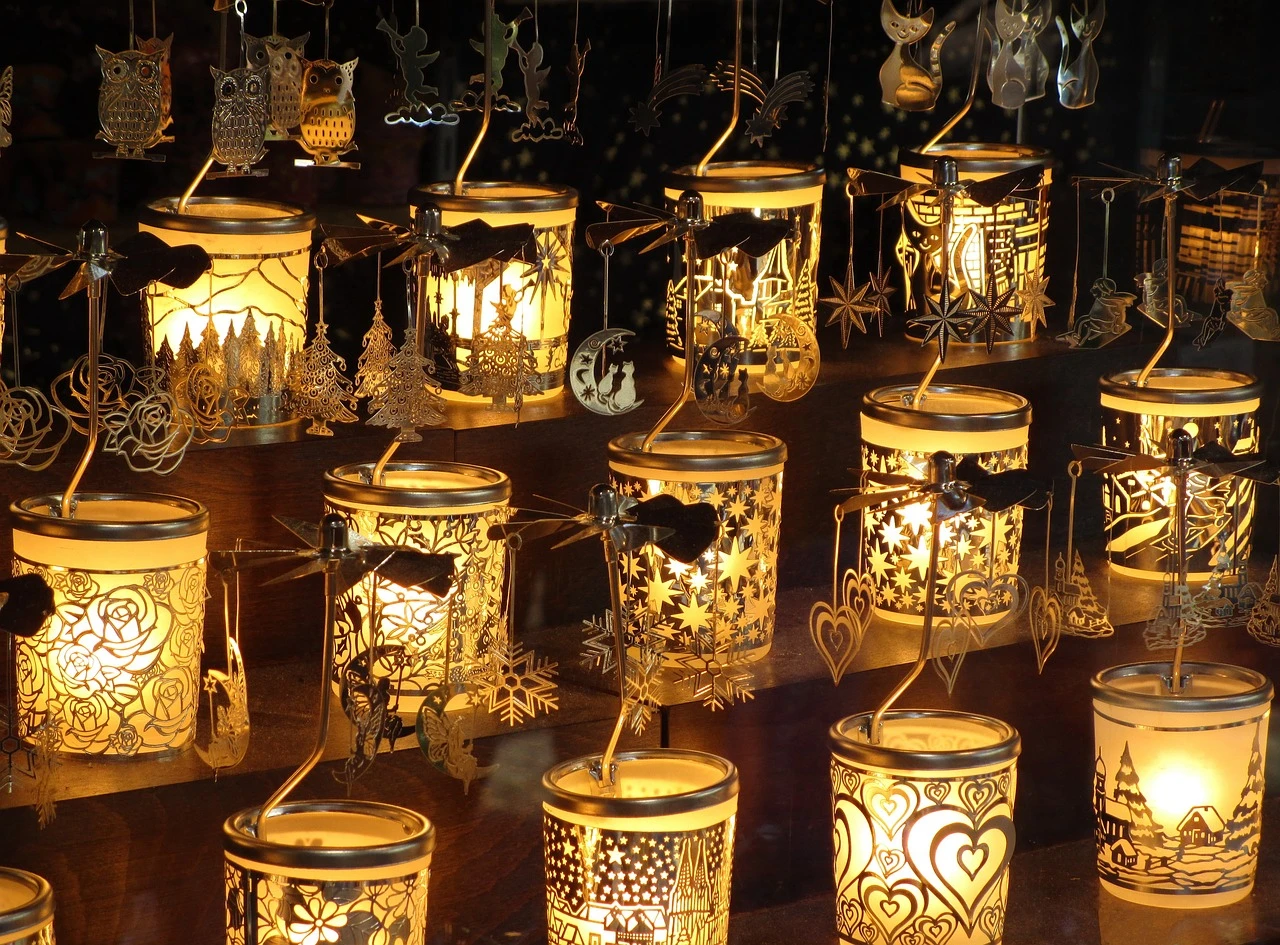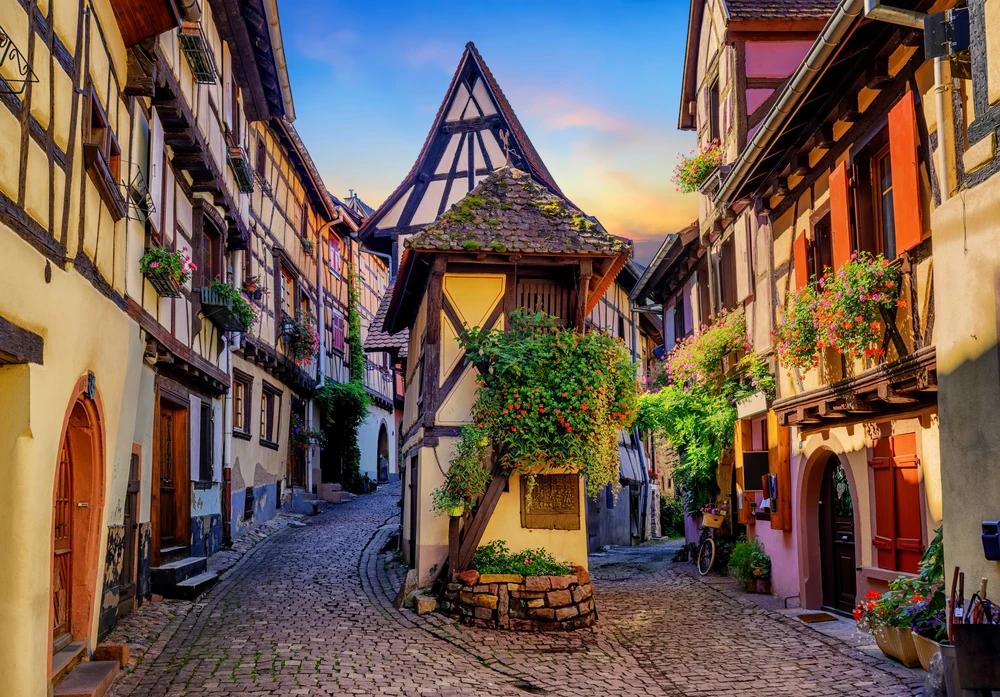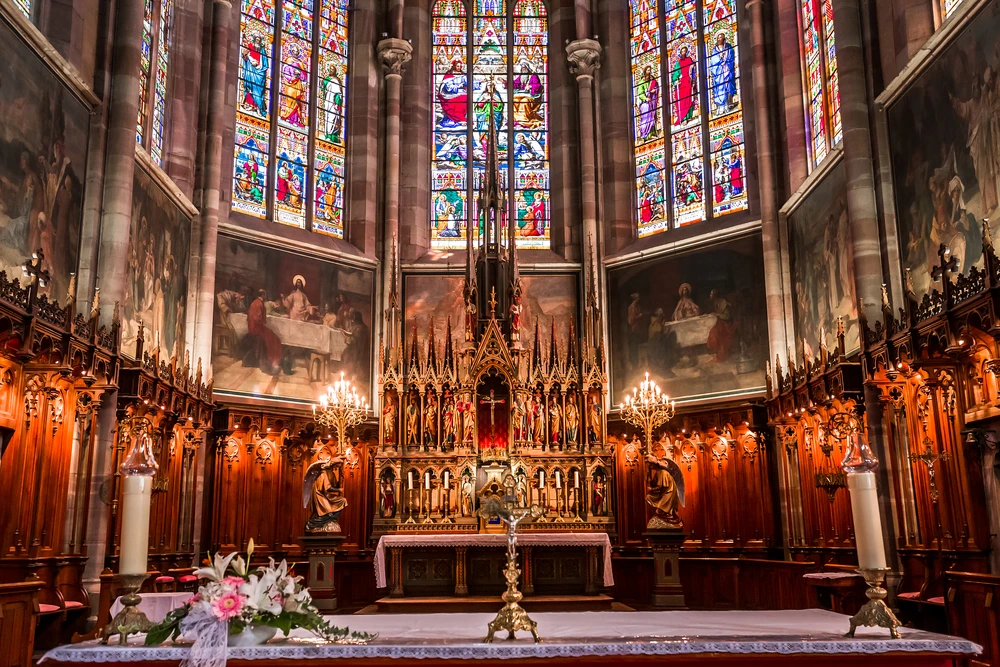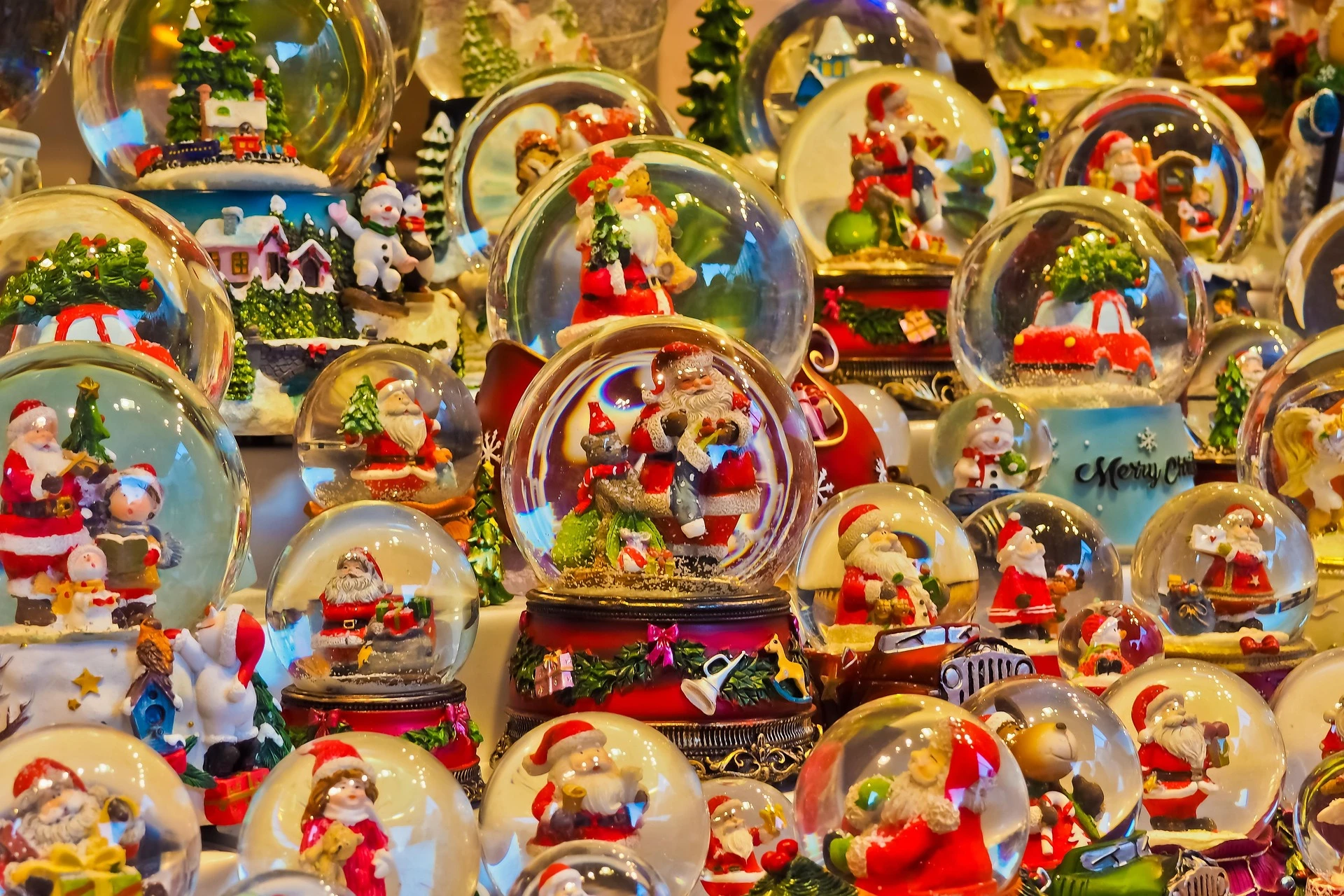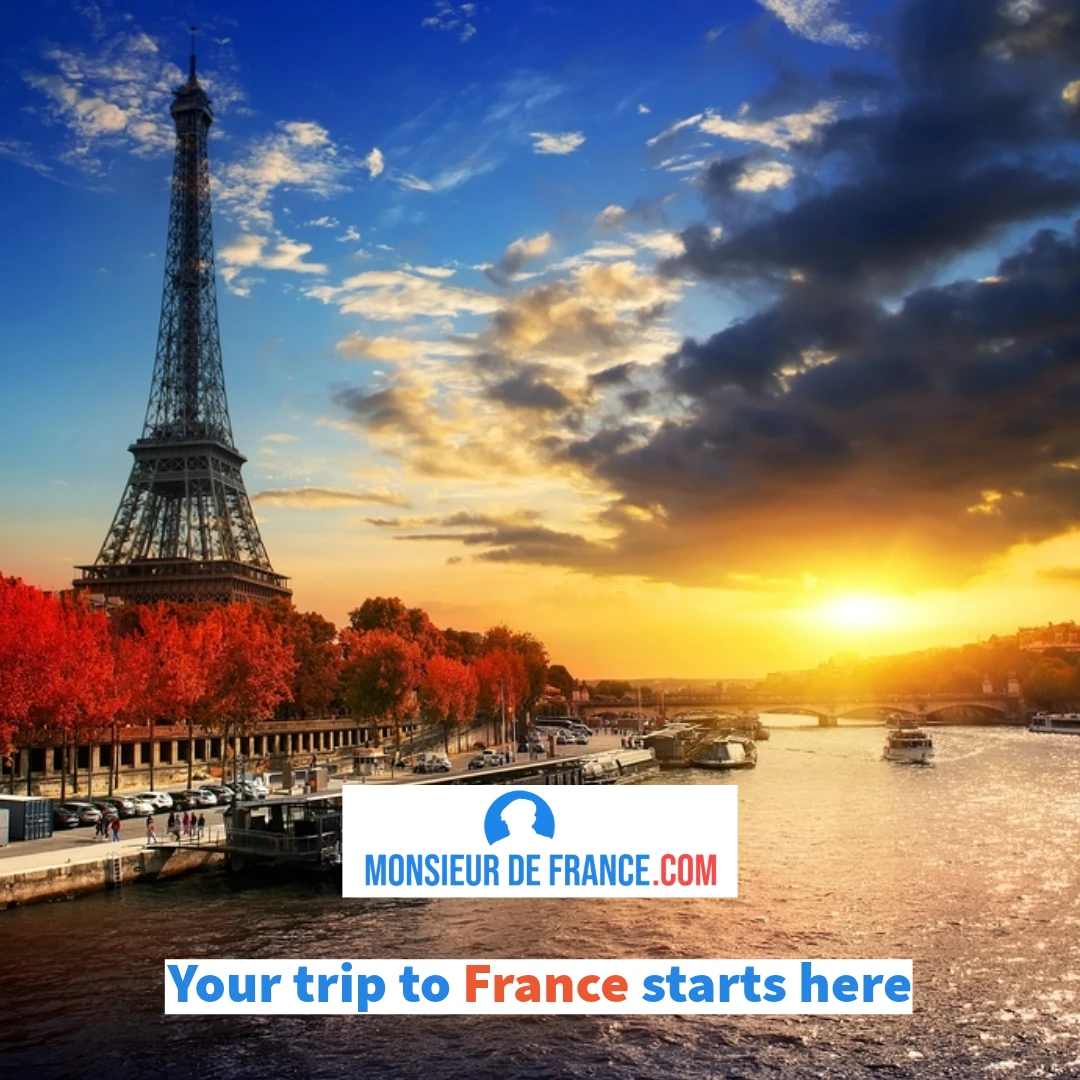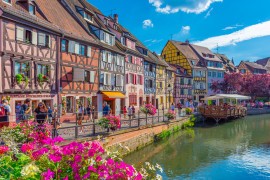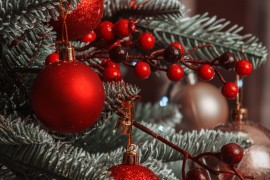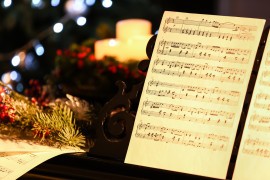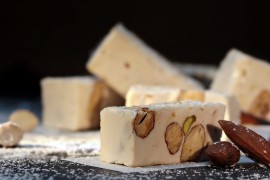There may be translation errors. Our translator wanted to try his hand at making mulled wine, so he tasted, tasted... Tasted again. Anyway, it's the accountant who's doing the translating today.
What is a Christmas market?
The Alsatian Christmas market is a mix of colour, human warmth and dazzle. Photo chosen by monsieurdefrance.com: depositphotos.com
First of all, the beauty, the atmosphere... And the freshness!
It's all about the atmosphere. It's often chilly, even cold, so you'll need a hat, a scarf and above all, a piece of friendly advice, warm, waterproof shoes (you'll often need to bring an umbrella). The chill is part and parcel of the Christmas market, and that's what people often come for. The atmosphere is enhanced by the decoration of the streets, squares and houses, often by the towns or villages, the shopkeepers of course, but also by private individuals who want to make someone happy. There are even competitions for this. There's also a lot of colour, brightly lit of course, but on the facades of Alsatian houses, as you'll see. In general, the Christmas market is in one or more squares, and there are lots of Christmas decorations (baubles, garlands, Christmas tree decorations, santons, etc.). You'll also find Christmas gifts such as decorations and clothes. Not everything is made in France, far from it, but it's specified when it is and it's increasingly possible, especially if you like wooden objects.
There are all sorts of decorations at Christmas markets: photo chosen by Monsieur de France: Image by G.C. from Pixabay
Gourmet delights
In general, there's something for everyone. Here, pretzels. Photo chosen by monsieurdefrance.com: Image by Kerstin Riemer from Pixabay
There's plenty to savour too. It has to be said that Alsace is one of France's most gourmet regions. You're bound to fall for a manele, those little gingerbread men (the same as in Shrek!), huge pretzels(sweet or savoury) or, more simply, a good crêpe with chocolate. Then, of course, there's mulled wine. This is a red wine (sometimes white, but it's specified) flavoured with spices such as cinnamon. It's delicious, great for sharing with friends and keeps you warm. To find out where the best mulled wines are, don't hesitate to ask the locals or shopkeepers you come across.
Mulled wine is a must at Christmas markets: Photo chosen by monsieurdefrance.com: by Alina Belogolova on Unsplash
And an old story
Don't be fooled into thinking that Alsace's Christmas markets are a recent invention for tourists. They have always been part of Alsatian life. The oldest is dated 1570, but it's highly likely that there were Christmas markets before that. For a long time, they only lasted a few days, usually a week before Christmas, but as time went by, they ended up lasting a good month, the time of Advent. In the old days, they were more a place for practical shopping, with paraffin lamps, candles and even earlier delicacies. Christmas markets now exist almost everywhere in France, but the real ones, the most beautiful, are in Alsace and Lorraine (the one in Metz is magnificent). These days, Alsace's Christmas markets tend to start in the last week of November (the best time to visit is early December) and finish a little after Christmas (sometimes on the day itself).
Strasbourg's Christmas market used to be called the "Foire de Noël". Engraving from 1850.
A few tips:
Firstly, don't forget that it's winter and you'll be out in the street, so cover up and plan for rain. Secondly, don't forget that the best weather is in the evening. So the best thing is not to go too early. Start your day late, or visit the monuments, and save the market for the afternoon. You won't waste the day, as the sun sets early in Alsace and it's already quite dark by around 4pm. If you're coming by car, make sure you know where your car park is before you arrive, so you don't waste too much time. When you have a problem, don't hesitate to ask people. Alsatians are friendly.
The Top 7 Christmas markets in Alsace :
1 Colmar Christmas market
The Colmar Christmas market is magnificent. Photo chosen by monsieurdefrance.com: aletheia97 via dépositphotos
The city is beautiful all year round, so you can imagine that the Christmas market is just as beautiful. The streets of the Ville-Vielle are already beautiful and colourful, but with the illuminations, it's like being in a Christmas story. As you explore the market, you'll also discover the city's fantastic heritage: the Pfister House, the Unterlinden Museum and you'll be strolling through the streets of Little Venice. In addition to the atmosphere in the city and particularly in Little Venice, there are 5 different markets:
1 Place des Dominicains, with its magnificent church. It dates from the 14th century and the stained glass windows illuminated at night are splendid.
2 The former customs square overlooks the stunning koïfhus house, with its designed roof and balconies.
3 The interior market of the Koïfhus House in the ceremonial rooms.
4 The market in Place Jeanne d'Arc
5 the village of rue de la montagne-verte, almost entirely gourmet.
View of the Colmar Christmas market / Photo chosen by monsieurdefrance.com: Xantana via depositphotos.Com
Going to the Colmar Christmas market
By train: you can get to Colmar station.
By car: Colmar is 6 hours from Paris by car (453 km). Theeasiest way is to park at the Saint Josse car park, rue Saint Josse 68 000 COLMAR. There is also a car park near the town hall, but it closes at 9pm. There are other car parks with shuttle buses. To find out about them, click here .
By air; Basel Mulhouse airport or Strasbourg airport.
2 The Strasbourg Christmas market
The street leading to Strasbourg Cathedral. Photo chosen by monsieurdefrance.com Phb.cz via depositphotos.com
It's the biggest Christmas market in Alsace, and certainly the best known. Strasbourg is the capital of Alsace and one of the capitals of Europe. There are over 300 wooden chalets, and Strasbourg is also home to the largest decorated Christmas tree in Alsace (some say Europe). It is located on the famous Place Kléber. It's also the oldest, dating back to at least 1570. The Strasbourg Christmas market gives you the chance to explore the city, which is often pedestrianised, and to see its main monuments, notably the famous cathedral (go early enough in the day to get in, as it is not open during certain services and closes early). You can also walk along the banks of the Petite France river and take some wonderful photos. Don't miss out!
1 Place Kléber: this is where you'll find the big fir tree
2 the Cathedral: there are also chalets all around.
3 Place Broglie: home to the famous Christkindelsmärik
4 Place du Marché-aux-poissons
5 Place Saint Thomas (in Little France)
6 Place du Temple Neuf.
7 Place des meuniers (to discover local craftsmen).
8 Place Grimmenssein: with the "off market" focusing on the social economy (the mulled wine is very good).
Don't miss rue des orfèvres or rue de l'Outre for the decorations, and don't forget to stop off at Maison Kammerzell for a good sauerkraut (we've tried it, to be honest - it's good, well served and not a tourist trap).
The famous Grand Sapin on Place Kléber (it still comes from the Vosges mountains, just next door). Photo chosen by monsieurdefrance.com: ifeelstock via depositphotos.com
Going to the Strasbourg Christmas market
By train: it's possible with Strasbourg TGV station
By car: Strasbourg is 4 hours 45 minutes from Paris by car (453 km). To be as close as possible to the Christmas markets, choose the Les Halles car park (rue des Halles and rue de Sébastopol), or the Parking Austerlitz on rue des Boeufs.
It ' s much easier than driving into the city, and the tram is great. It runs frequently, is comfortable and drops you off just 40 metres from the Cathedral. There's a system that allows you to buy tram tickets at the same time as paying for your parking ticket, which gives an interesting discount. A day ticket costs around €4.20(in 2023) and gives access to 7 tram journeys per car. Alternatively,
Campervans can park at the Elsau car park on rue Charles Winter.
By air; Basel Mulhouse airport or Strasbourg airport.
3 The Kaysersberg Christmas market
It's one of the best known, and deservedly so, because it's one of the most typical in a magnificent village. Medieval atmosphere, colourful half-timbered houses, all the ingredients are there. We're both in the Ballons des Vosges Regional Nature Park and in the middle of the wine route. Riesling, gewurtztraminer and more (it's even harder to say when you've tasted several glasses...).
One of the streets of Kaysersberg at Christmas: Photo chosen by monsieurdefrance.com: olesiabilkei via depositphotos.com
Go to the Kaysersberg Christmas market.
By train: There is no station in Kaysersberg. You have to stop in Colmar. There are buses. Information is available here.
By car: Kaysersberg is 6 hours from Paris by car (453 km), 12 km from Colmar (17 minutes) and 77 km from Strasbourg (50 minutes).
The GPS number is 68 240 Kazsersberg. You need to park in the park-and-ride sites: Hinteralspach or route de la Poutroie.
By air; Basel Mulhouse airport or Strasbourg airport.
4 The Riquewihr Christmas market
The medieval village is delightful, even outside the festive season. The market is renowned and offers a wide range of cultural and other activities (if you like Christmas carols, this is the place to go). We're always on the wine trail if you feel like it (and your liver).
View of the Riquewihr Christmas market / Photo chosen by monsieurdefrance.com: Xantana via depositphotos.Com
Going to the Riquewihr Christmas market
By train: There is a station at Riquewihr poste. Information is available here.
By car: Riquewihr is 6 hours from Paris by car (453 km), 15 km from Colmar (20 minutes) and 70 km from Strasbourg (50 minutes).
For the GPS it is 68 340 Riquewihr. You need to park in the park-and-ride facilities: zone artisanale - rue des prés or avenue Jacques Preiss.
By air; Basel Mulhouse airport or Strasbourg airport.
5 Ribeauvillé Christmas Market
The town is also medieval. It rises high above the rest of the town and, along with the atmosphere, you'll discover one of the most beautiful villages in France.
Ribeauvillé is beautiful all year round, especially in the snow. Photo chosen by monsieurdefrance.com: Léonid Andronov via dépositphotos.Com
Going to the Ribeauvillé Christmas market
By train: Ribeauvillé station. Information here.
By car: Ribeauvillé is 5 hours 30 minutes from Paris by car (453 km), 17 km from Colmar (18 minutes) and 65 km from Strasbourg (45 minutes).
The GPS number is 68 150 Ribeauvillé, and the car park is located in the Muehlbach business park in the Cordon car park (exit 20 from the A35). It costs around €5 and there are shuttle buses every 20 minutes.
By air; Basel Mulhouse airport or Strasbourg airport.
6 Eguisheim Christmas Market
Eguisheim is famous for its half-timbered courtyards and colourful facades. The houses are typical, as is the village, and the vineyards are never far away. We recommend...
Christmas markets are also a great place to find festive decorations. Photo chosen by monsieurdefrance.com: by moni quayle from Pixabay
Going to the Eguisheim Christmas Market
By train: There is no train station, but there are bus services from Colmar station.
By car: Eguisheim is 5 hours 30 minutes from Paris by car (453 km), 10 km from Colmar (15 minutes) and 65 km from Strasbourg (45 minutes).
The GPS number is 68 240 Eguisheim.
By air; Basel Mulhouse airport or Strasbourg airport.
Eguisheim is also very pretty in summer, as you can see. Photo chosen by monsieurdefrance.com: Xantana via dépositphotos.com
7 The Obernai Christmas market
There are 40 chalets at this gourmet Christmas market (where you can sample the local mulled wine, which is more of a white wine), in a town that is a joy to visit in summer and winter alike. Don't miss the market squares, the central square and the famous Alsatian roofs.
Obernai is famous for the church of Saint Peter and Saint Paul, whose interior is well worth a visit. Photo chosen by monsieurdefrance: isogood via depositphotos
Going to the Obernai Christmas Market
By train: the station is located... Place de la gare! And all the info is here
By car: Obernai is 5 hours from Paris by car (511 km), 30 km from Strasbourg (26 minutes) and 50 km from Colmar (50 minutes).
For the GPS it is 67 210 OBERNAI
By air; Basel Mulhouse airport or Strasbourg airport.
But also: Haguenau, Wissembourg, Sélestat, Turckheim
If you want to get off the beaten track a bit, and don't like the crowds, don't hesitate to visit the less famous but very authentic markets in Haguenau, Wissembour, Sélestat and Turckheim.
❓ FAQ – For foreign visitors: Christmas markets in Alsace
When do the Christmas markets in Alsace take place?
Most open at the end of November and close around Christmas or New Year's Eve. Some, such as those in Strasbourg and Colmar, often continue until the first week of January.
Which is the most famous Christmas market?
The market in Strasbourg, known as the “Christmas Capital,” is the oldest Christmas market in France. It has been around since 1570 and attracts more than two million visitors from around the world every year.
Can you visit several markets during the same trip?
Yes, and it's even recommended! Alsace is a compact region: in two or three days, you can easily combine Strasbourg, Colmar, Kaysersberg, Eguisheim, and Riquewihr. The distances are short and the scenery is magnificent.
Do you need to rent a car to visit the markets?
It's not mandatory, but it's very convenient. The train serves Strasbourg, Colmar, and Mulhouse, and special shuttles connect several villages. For total freedom, a car is still ideal.
Is it easy to park?
Yes, but you have to be smart about it. Large cities such as Strasbourg and Colmar have park-and-ride facilities with free shuttles to the center. Parking is easier during the week than at the weekend.
Should I book my hotel in advance?
Yes. Christmas is the busiest tourist period of the year in Alsace. It's best to book in October, especially if you're looking for traditional accommodation (half-timbered houses, vineyard cottages, hotels decorated for Christmas).
Are the markets safe?
Yes, security is well organized. Access checks are carried out at the entrance to large markets. The streets are pedestrianized, well lit, and monitored. However, keep an eye on your personal belongings, as you would in any crowd.
What specialties are a must-try?
You can't leave without trying bredeles (small Christmas cookies), mulled wine, tarte flambée, spaetzle, or gingerbread. And for a more complete meal, try a good baeckeoffe or choucroute garnie!
Can you pay by card at the markets?
More and more chalets are accepting credit cards, but some small artisans prefer cash. Always bring a little cash with you, especially in the villages.
Are there any covered or sheltered markets in case of rain?
Yes. In Colmar, part of the market is located under arcades and market halls.
In Mulhouse, some stalls are covered. In case of rain, an umbrella or raincoat is essential.
Can we bring children?
Of course. Alsatian Christmas markets are designed for families, with rides, giant decorations, shows, and entertainment for the little ones. The magic enchants young and old alike.
What languages are spoken at the markets?
French and German are the main languages spoken, but in large cities and tourist areas, most vendors also speak English. In villages, a smile is often enough to make yourself understood.
When is the best time to visit?
The most magical time is after 5 p.m., when night falls and the lights come on. The atmosphere becomes magical, with singing, lights, and the smell of mulled wine.
💡 Tip from Monsieur de France
If you're coming from another country, plan to spend at least two nights there to really enjoy the atmosphere. Friday evening in Strasbourg, Saturday in Colmar, and Sunday in the wine-growing villages: this is the perfect itinerary for discovering the spirit of Christmas in Alsace.

